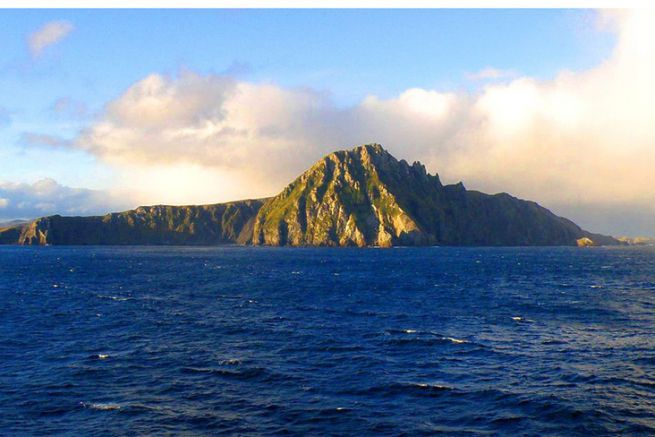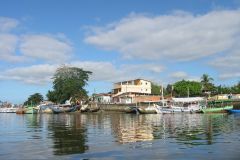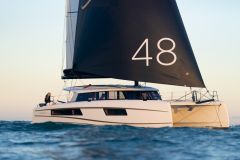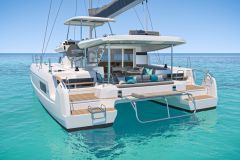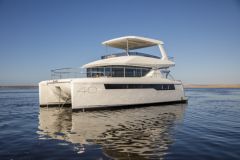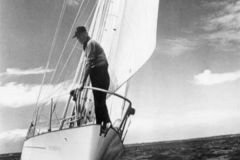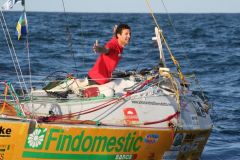Jean-Pierre Fréry announced at the Nautic in Paris in December 2017 that he wanted to embark on a non-stop circumnavigation of the world via the three capes at the helm of a Lagoon 400S2. When we presented this unusual project (see our article here), many of you reacted.
The main questions concerned the choice of boat, a cruising catamaran, but also its size (40 feet). We questioned Jean-Pierre to get answers to these questions.
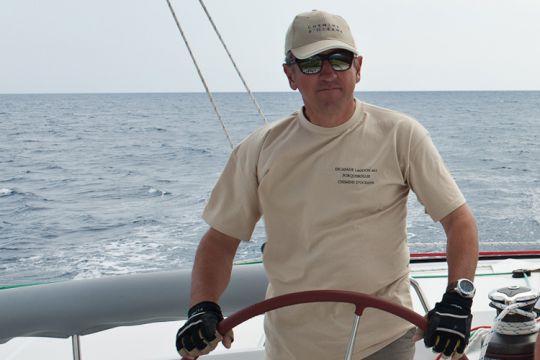
Cavok is a Lagoon 400 S2, why did you choose this shipyard?
I have been a Lagoon dealer for 25 years now and I know this family of catamarans very well. Choosing another brand would not have looked like anything else, especially as I am sure they are good boats. I have confidence in them and going to sail in the South Seas on a Lagoon doesn't scare me.
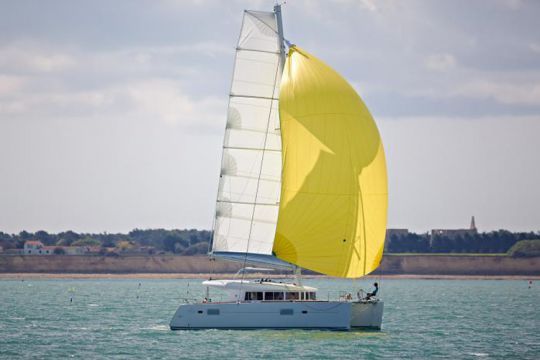
How about a bigger catamaran?
The Lagoon shipyard offered me the chance to sail around the world on a 500, but I refused. I wanted a 400. On a 40-footer, everything is easy to manage by one man alone. On a bigger catamaran, the efforts are physically more complicated.
I didn't want a fly catamaran either, as it necessarily involves a hydraulic (or electric) helm. However, the responsiveness of the helm is not the same as with a line system like on the 400. We're going to be sailing in heavy seas often from astern and the helmsman has to be able to intervene quickly and effectively on the rudders so as not to put the boat in danger. With a hydraulic system, we would always have had a time delay.
Why didn't you choose a new model with its rigging set back?
The new back rigs that have appeared on the new Lagoon range are great for cruising. But not so good when it comes to sailing downwind very unbridled. Indeed, it is difficult to open the mainsail enough.
With a mainsail which remains too tucked in, the risk of starting from the lof is greater, especially when sailing under pilot. On a Lagoon 400, I can shock more. But in the absence of backstay and boom vang, I have also provided a boom retention system, a 6-strand hoist, which flattens the sail by pulling it down to give it less power. This also relieves the helmsman or pilot.

Are you afraid of capsizing or dismasting?
Given the volume of the hulls and their wet surface at the ends, I'm not afraid to sank. Nor will I capsize unless I make a big mistake by placing the boat in the wrong position in the sea. What's more, we're not racing. We're not looking for performance at all costs. We're not refraining from taking the current course, for example, or even in some really tricky situations from facing the waves with the help of the engines.
As for dismasting, I don't believe in it on a Lagoon 400, which is also why I chose this model. The mast is held by 2 layers of spreaders and 2 horns. Self-mounted, it is really rigid. The cap shrouds are also very well dimensioned.
If the rigging is standard, we replace the pins with bolted and pinned pins for safety. With this the rigging seems indestructible.
What do you fear the most that could derail this round-the-world tour?
A project like this is made up of 10,000 little details. All it takes is one to let go and it all stops. The good one - or rather the bad one! - current example is Spindrift. This trimaran, prepared for 2 years, dismasts before it can even cross the line... Probably a little mistake in preparation, a pin not checked. That's what I fear.
That's also why I want to cover at least 5,000 miles for the pre-start trials to validate as many things as possible.
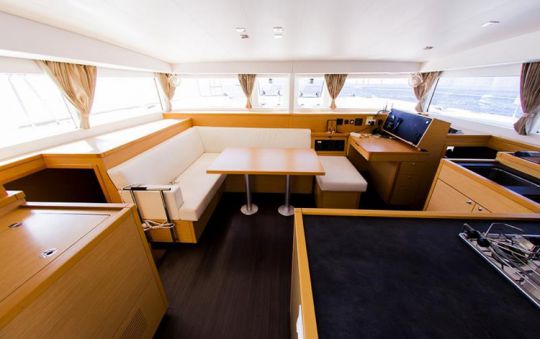
And the big sea, how are you going to handle it?
We are likely to encounter heavy seas, mainly from the rear. For this we have prepared the boat by doing 2 main things: reinforcing the aft cleats and securing the saloon door.
In heavy seas, I use trainers to slow the boat down. The idea is to let it surf the wave, but slowing it down so it doesn't crash into the wave ahead. I put a big rope, 100 metres of 22mm, between the two rear cleats. I then adjust the boat's speed by increasing or decreasing the size of this large loop. And to get the sled back on board, I drop one end and pull it up by the other, without (almost) forcing it.
I've already been able to validate this technique in the Mediterranean. There were 60 N off Algeria and we were playing cards in the saloon while the catamaran was sailing with her trailing boats! I think the trailing boats are less vicious than the floating anchors. The fixing of the two rear mooring cleats has been reinforced with large counterplates.
To avoid seeing the waves breaking into the cockpit flooding the saloon, I didn't want a catamaran with a large bay window open at the stern. The Lagoon 400 has a "small" 80 cm wide sliding door. In addition, I install a protection in front of it with 3 panels of 12 mm Plexiglas that get stuck in aluminium rails. A bit like the companionway doors on a monohull. Depending on the sea, we will be able to leave one or two of them in position and pass over easily. The sliding door will be able to stay open without risk.
You're leaving at 3, why that number?
To navigate, 3 people seems like the right number. This allows for short shifts of 2 hours, while the one who is resting can stay 4 hours in his bunk. In addition we have 4 cabins. Each one its own and a last one to store the food.
We mustn't forget that if the solo sailors in a Vendée Globe take on board 80 days of food, we're going to have to stockpile 450! There are three of us and we're setting out for 150 days... That's going to fill the volume of a forward cabin.
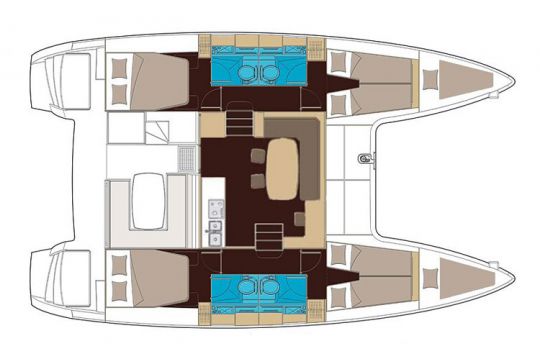
How are you going to load the boat?
We don't store anything in the forepeaks so as not to weigh down the bows. Also the 600 l water tanks will only be filled with 100 litres. For the rest we have a watermaker. As far as spare equipment is concerned, we are taking almost nothing with us. 2 100 m reels of 12 mm rope to replace the halyards and sheets, a toolbox and that's it.
How do you plan to manage energy?
If our Lagoon 400 S2 is standard, concerning the electrical circuit, we have completely revised it. We have planned 1000 W solar panels and 2 wind turbines. This should give us our electrical autonomy in all weathers.
Our electrical needs are low. The biggest substations are the desalination, the Fleet 250 to send videos and heating in the South Seas. Otherwise, we're going to do rather little autopilot and we don't put the fridge on. Indeed, with its 110 litres, there's no question of managing 5 months of expenses! But we don't forbid ourselves to fish..
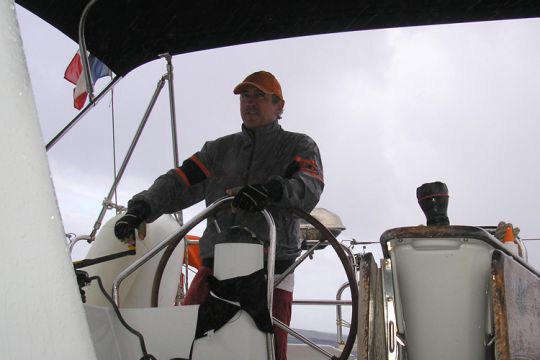
Is your preparation program going according to plan?
As expected, the boat was delivered by Lagoon. She is currently in Saint-Gilles-Croix-de-Vie for the final dry preparations, then she will leave for La Rochelle before making a first offshore trip towards La Grande Motte (departure from La Rochelle on March 5, 2018). The boat will then be present at the Multihull Boat Show in April 2018. A first opportunity for yachtsmen to discover it.
